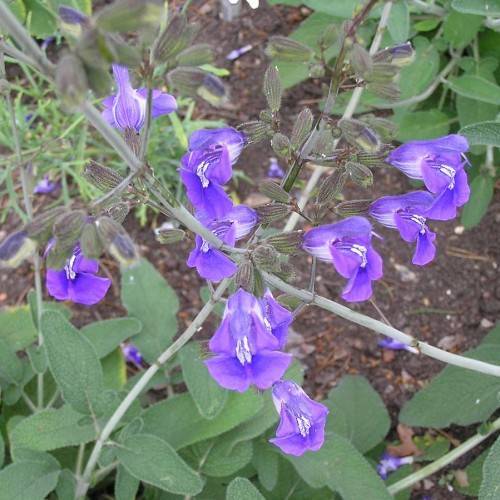
candelabrum sage
Salvia candelabrum
Cycle:
Herbaceous Perennial
Watering:
Average
Hardiness Zone:
8 - 10
Flowers:
Flowers
Sun:
Full sun,part shade
Leaf:
Yes
Growth Rate:
Low
Maintenance:
Low
Care Level:
Medium
watering
Candelabrum sage should be watered deeply twice a week during spring and summer, and less frequently during fall and winter months. Before watering, make sure the soil is dry to the touch – you can test this by sticking your finger into the soil or by using a soil moisture meter. If the soil is still moist, wait an extra day or 2 before watering. If temperatures are particularly warm, you may need to water your Candelabrum sage more frequently.
sunlight
Candelabrum sage (Salvia candelabrum) is a great choice for adding bright colour and texture to a garden setting. This plant prefers a full sun location for optimum growth and flowering. It should receive at least 6 to 8 hours of direct sunlight each day. During the spring and summer months, candelabrum sage should get plenty of sunshine throughout the day, while in the winter months it should receive some direct sunlight on a regular basis when possible. When providing sunlight for candelabrum sage, it is important to ensure it does not receive too much, as this can lead to scorched foliage.
pruning
Candelabrum sage (Salvia candelabrum) is a low-growing, fast-growing shrub characterized by long branches and an arching form. Pruning should be performed at least once per year, preferably in early spring. To maintain a pleasant form and ensure vigorous new growth, the plant should be pruned by no more than 1-third its total body size. Any dead or damaged branches should be removed to ensure healthy growth. If new growth is desired, the tips of the branches should be cut back to promote branching. Pruning can also be done to control the size, maintaining a more specific shape. Providing Candelabrum Sage with appropriate pruning will help to maintain its robust growth pattern and ensure its health for years to come.
